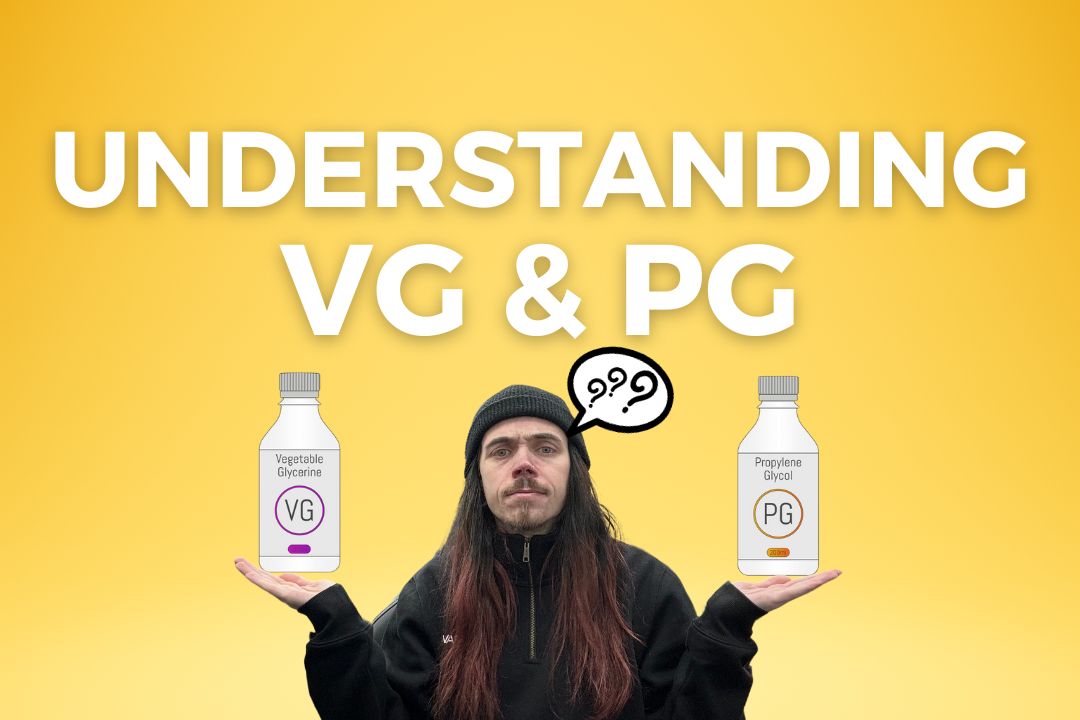Understanding VG and PG in E-Liquids: A Vaper’s Guide
For anyone delving into the world of vaping, the terms VG (Vegetable Glycerin) and PG (Propylene Glycol) are bound to come up frequently. These two ingredients form the base of most e-liquids and play crucial roles in your vaping experience. Understanding the differences between VG and PG and how they affect e-liquids is essential for any vaper, whether you're a beginner or an experienced enthusiast. This blog aims to demystify VG and PG, helping you make informed choices about your e-liquids.
What are VG and PG?
Vegetable Glycerin (VG)- Origin: VG is a natural chemical, derived from vegetable oils.
- Consistency: It is thicker and more viscous than PG.
- Vapour Production: VG is known for producing large, dense clouds of vapour.
- Throat Hit: Provides a smoother and milder throat hit compared to PG.
- Flavour Intensity: VG tends to mute flavours slightly, though it imparts a slightly sweet taste.
- Allergies and Irritations: Less likely to cause allergic reactions or throat irritation.
Propylene Glycol (PG)
- Origin: PG is a synthetic substance and is used in various applications, including food and pharmaceuticals.
- Consistency: It is thinner and less viscous than VG.
- Vapour Production: Produces less visible vapour compared to VG.
- Throat Hit: Delivers a stronger throat hit, mimicking the sensation of smoking tobacco.
- Flavour Carrier: Excellent at carrying flavours, leading to more pronounced and crisp taste.
- Allergies and Irritations: Some people may be allergic or sensitive to PG.
VG/PG Ratios in E-Liquids
E-liquids come in various VG/PG ratios, which significantly impact the vaping experience. The most common ratios include 50/50, 70/30 VG/PG, and 80/20 VG/PG.50/50 VG/PG
- Balanced Experience: Offers a middle ground between throat hit and vapour production.
- Device Compatibility: Works well with most vaping devices, including smaller, lower-powered devices like pod systems.
- Flavour and Vapour: Provides a decent flavour profile and satisfactory vapour production.
70/30 VG/PG
- Cloud Production: Ideal for those who enjoy cloud chasing.
- Smoothness: Offers a smoother throat hit.
- Sub-Ohm Vaping: Well-suited for high-powered devices and sub-ohm tanks.
80/20 VG/PG
- Maximum Clouds: Produces the largest vapour clouds.
- Muted Flavours: May slightly reduce flavour intensity.
- High Power Devices: Best used with powerful devices capable of handling thick e-liquids.
Choosing the Right VG/PG Ratio
- Consider Your Device: Higher VG e-liquids work best with powerful devices, while 50/50 is better for standard, low-powered devices.
- Personal Preference: If you prefer a strong throat hit and intense flavour, a higher PG ratio is ideal. For smoother hits and large clouds, go for a higher VG ratio.
- Allergies and Sensitivities: If you have a sensitivity or allergy to PG, opt for a higher VG content.

